Though beautiful graphics and clever copywriting can make a marketing campaign more effective, people are the real driving force behind any industry.
Cultural shifts in fashion, music, and politics have a profound effect on the behavior of any brand’s given target market. The conversations happening out there are full of valuable insights you can leverage. All you have to do is listen!
Monitoring, analyzing and predicting trends through social media monitoring has become more important than ever before in recent years. It helps businesses stay ahead of the curve on emerging trends and mitigate negative attention before it turns into a disaster.
In this guide, we’ll take a closer look at why you need social media monitoring and the best way to go about it in this ever-changing social climate.
The importance of a social media monitoring strategy
Social media is where a huge proportion of all human conversation happens in our modern world, and that includes conversations affecting your brand and niche.
The insights you can gain from monitoring conversations involving your customers and competitors can give you valuable information on the needs of your customers, and emerging changes within your industry.
Here are just a handful of the ways that effective social media monitoring can improve your overall performance.
Generating new leads via keywords
Today, many people use social media in much the same way as they use search engines, and with 97% of Gen Z consumers using social media as their main starting point for shopping, this trend is only expected to become more pertinent to businesses of all sizes.
In the spirit of these platforms operating like a search engine, you can analyze various types of social media keywords to identify new leads and better understand how your target market is using popular social media platforms.
Search Engine Watch defines six main keyword categories to follow in social media monitoring tools:
- Brand/company
- Competitors
- Person
- Campaign
- Industry
- URL
Once you have the tools to identify these emerging trends, the next step is understanding how to position your business and offering in relation to the trends across multiple social media platforms and ensure that it makes sense to the end-user and speaks to your target audience.
Location-specific keywords such as “best coffee in London”, industry keywords like “audio tech”, or “craft spirits”, and competitor brand names will all be at the center of conversations that will help you understand how the public views your brand.
Improving customer service
These days, good customer service means interacting with your audience by listening to and responding to questions, feedback, complaints, and any other kind of online discourse that might involve your brand on social media.
According to SproutSocial and Marketing Charts, 21% of consumers follow brands on social media to communicate with their representatives.
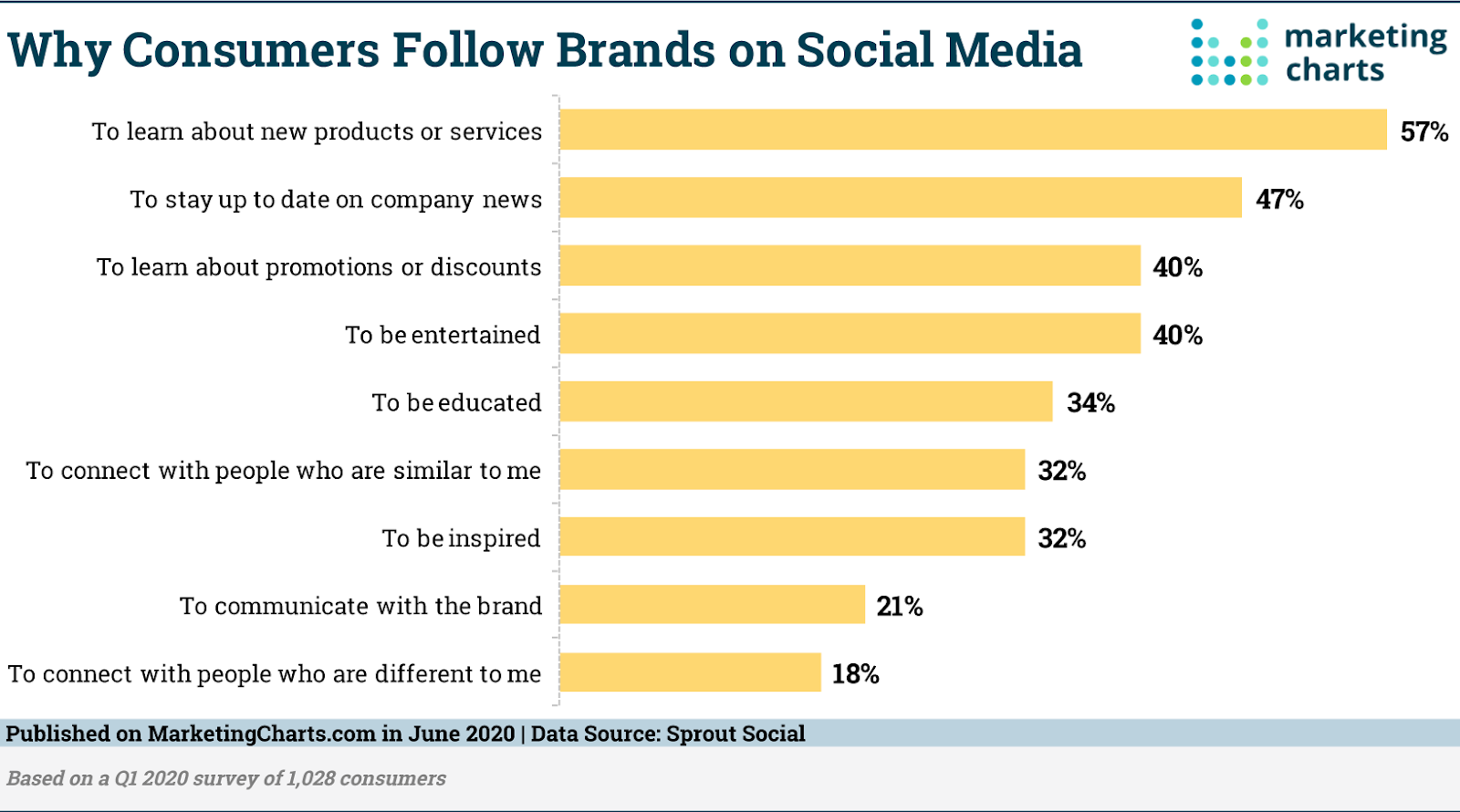
If communications directed at your brand go unnoticed, it can have catastrophic results for your brand equity and will discourage even satisfied customers from interacting with your brand on social media, as they’ll often assume that their posts won’t get a result.
By actively tracking mentions of your brand, you’ll be able to ensure quick responses to both good and bad interactions, and maintain an all-around higher standard of customer service whilst ensuring consistent feedback loops help to improve your business and product offering.
Scouting influencers and advocates
Relationships with influencers and advocates can be a huge boon to your brand’s social presence and potential reach online.
Aside from having large followings (which you’ll be able to tap into!), influencers’ posts about your brand will foster a greater sense of trust in your products and services, driving up your brand equity.
Sometimes, it only takes a little back-and-forth interaction with an account that’s already advocating your brand to kick-start a relationship that will pay dividends for your social media presence, and without effective social media monitoring, these kinds of opportunities can easily pass you by.
Social media monitoring not only assists in scouting influencers but also tracking the results of influencer campaigns. Analyzing the number of mentions across social media helps to understand whether the messaging resonates with your audience and assess the results of influencer campaigns. In this way, you can largely improve the ROI of social media efforts.
By the way, here’s a social media performance dashboard that we built here at Improvado:
Tips for effective social media monitoring
Now that we’ve looked at why social media monitoring is important, here are a few tips for making sure your social media monitoring efforts are as effective as possible.
Don’t cast to a wide net
Many people go into social media monitoring thinking that, by tapping into as many channels and data sources as possible, they’ll gain a better view of the trends and conversations that are most relevant to their marketing goals. However, this can often lead to you spreading your resources too thin and getting a low-resolution, and often confusing view of your target market’s behavior and habits.
The world of social media is a big place, far too big to trawl every last platform and space for social media marketing opportunities. As leading paid social agency KAU Media Group says, “The number of social media users worldwide has reached 3.484 billion, rising nearly 10% year-on-year.”
Plus, the recent events showed that social monitoring tools may not be effective enough to justify the privacy concerns they lead to. That’s why you have to maximize their effectiveness to reach your primary business objectives.
After Uvalde, social media monitoring apps struggle to justify surveillance https://t.co/H4HXFXjYpk pic.twitter.com/OwYRI9Xzfo
— The Verge (@verge) May 31, 2022
Be sure to narrow your search down to the platforms, geographic locations, demographics, and interests that are most pertinent for your brand for a clearer picture of emerging trends and a smaller, more manageable data set.
Know your Competitors
Though you certainly don’t want to mirror your competitors’ strategy, monitoring your competitors and the online conversations surrounding them can be a big help in understanding the conversations and trends that characterize your industry.
Follow your closest competitors as if you were their biggest advocates, paying especially close attention to the things their customers love about them, but more importantly, the kinds of content and interactions that draw a negative response.
When companies make a public blunder, it can often seem easily avoidable in hindsight, but it’s certainly not something you can afford to take your chances with. Observing and understanding these things in your competitors’ activity can be a big help in maintaining a positive image on social media.
Spread the Word
Social media monitoring shouldn’t begin and end with your marketing department. The things you learn through social media monitoring can and should be shared throughout your business to ensure a better all-around customer experience.
For example, if your competitors are being praised for having a user-friendly UI on their mobile app, you might want to pass these findings on to your company’s designers and developers to help inform future updates.
Though many findings gained from social media monitoring may be the remit of the marketing team, make sure you’re not keeping them all to yourself, especially when there are other arms of your company that may benefit from it.
Word of mouth marketing
Responding to every mention and request on social media helps to build trust with current customers, encourage prospects to get in touch with your brand, and increase engagement rates across social channels.
With social media monitoring, you can find user-generated content, which is huge for online consumers. Basically, you get a genuine testimonial with the near-to-zero effort invested in it.
Hubspot claims that 76% of consumers make purchase decisions based on the past buyers' opinions and reviews.
By contacting customers across social media, you can expand a collection of positive reviews and identify issues with your product or service that customers share on social.
Top 5 Tools to Stay On Top of New Social Media Marketing Trends
Finally, here’s a round-up of some of our favorite digital marketing tools for monitoring social media marketing trends.
1. Hootsuite
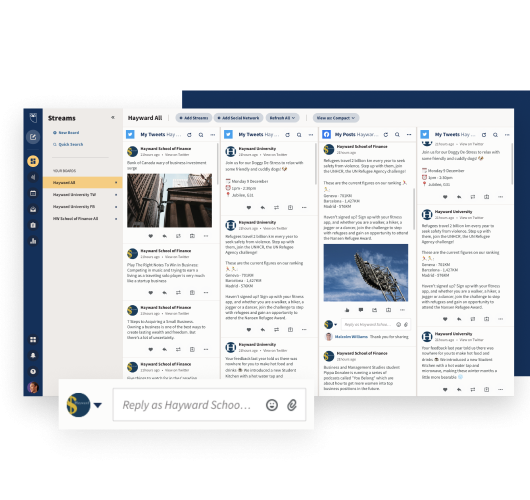
Generally held up as the standard for social media monitoring tools, Hootsuite is a highly popular freemium platform for managing your marketing on all major social media platforms. Aside from having a range of great monitoring tools, it also allows you to schedule posts across your platforms and delegate tasks among members of your social team.
2. Sprout Social
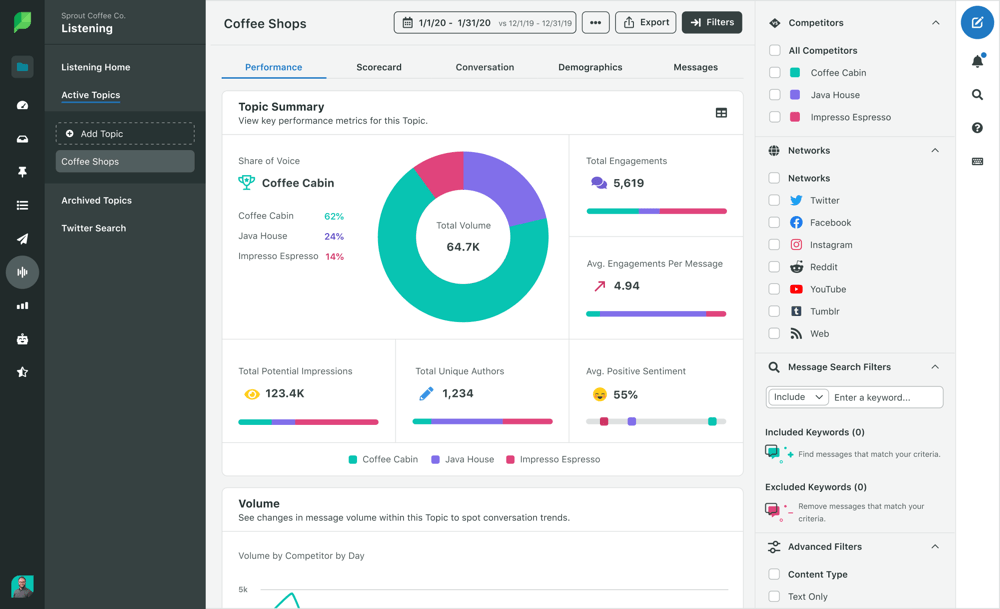
Sprout social enjoys immense popularity, as aside from post scheduling and monitoring tools, it also provides a fantastic suite of analytics features, capable of displaying important metrics such as your share of voice by platform, post-interaction over time, and impressions divided by campaign. These features make the tool especially useful for businesses whose social media resources are spread across several marketing initiatives and platforms.
3. Keyhole

Keyhole offers an impressive suite of tools specifically for social media monitoring, including detailed, AI-driven “account recommendations”, such as the kinds of hashtags to target and the best post times for engagement. It also offers an excellent array of influencer-oriented tools, allowing you to find, vet, and compare influencers who work within your niche, and measure influencer ROI on an ongoing basis.
4. Talkwalker
Talkwalker is a more wide-reaching consumer intelligence platform that has great applications across general content marketing, paid and organic campaigns, and online brand management. The social listening arm of the platform allows you to customize dashboards based on your needs, track and analyze your brand mentions, and uncover new opportunities to connect with your target market.
5. Netbase
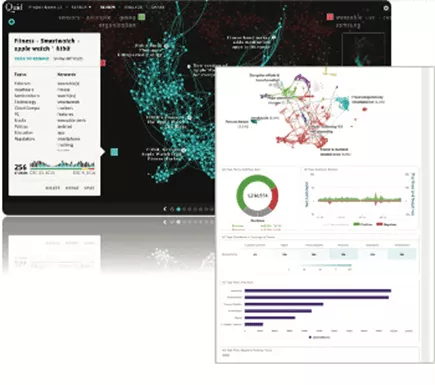
One of the lesser-known but more advanced social listening tools, Netbase uses AI-powered Natural Language Processing to help you make more sense of conversations concerning your brand from a single glance at the dashboard. Competitor conversations, hashtags, social posts, emotions, and behaviors can all be analyzed at a granular level, which is great for helping you find nuances and missed opportunities when you’re already working to a solid social strategy.
6. AlsoAsked
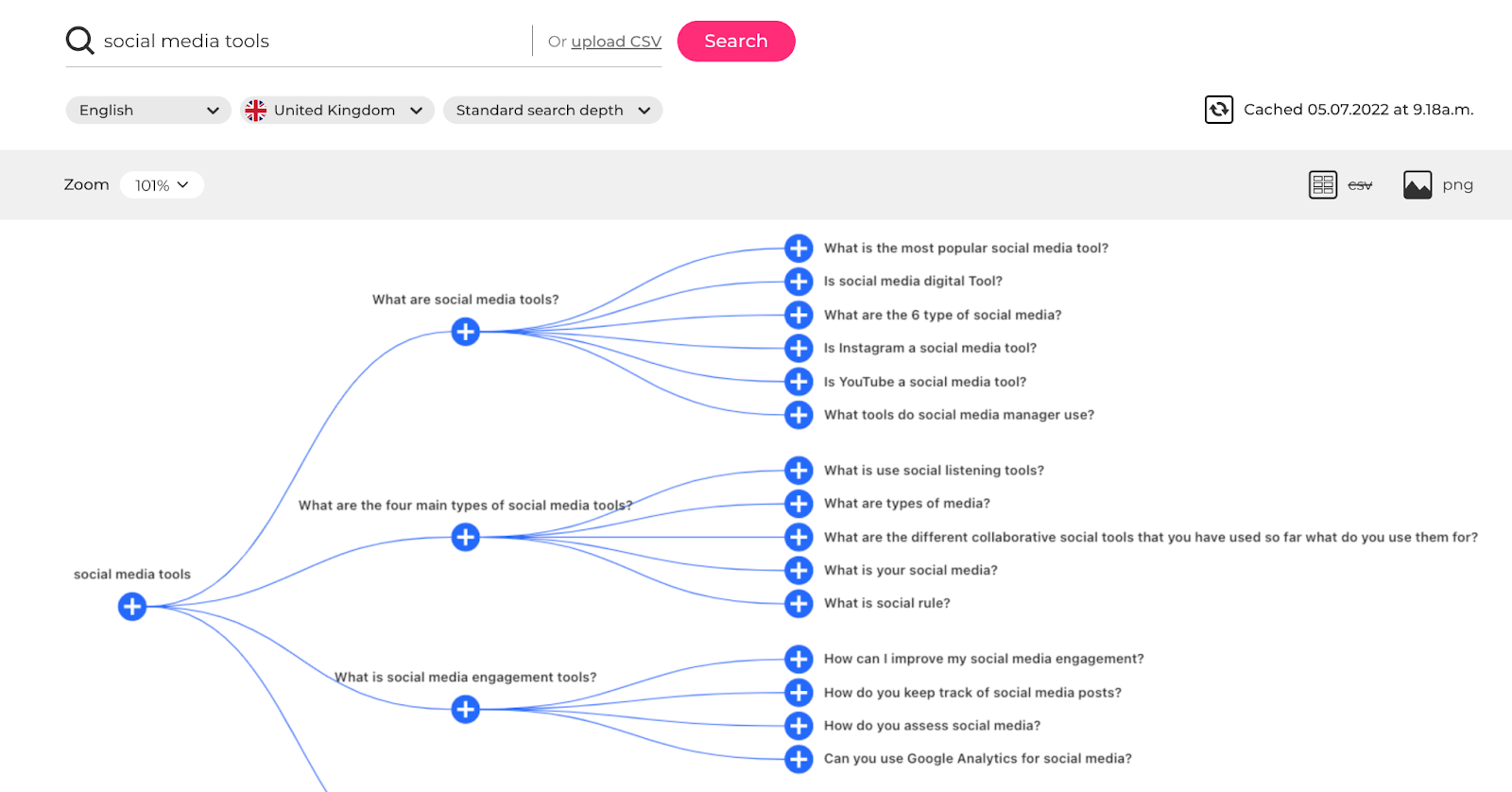
AlsoAsked provides the closest related questions to any given user’s query. Configuring the language and region helps to laser focus your insights gained from this tool. AlsoAsked can help to create and inform your content strategy based on results that appear in search. AlsoAsked also provides you with a deeper dive into additional sub-questions that users could be looking to answer which provides an overview and the suggested intent of the subject - this will help you position your content to provide the most value in a specific segment of a customer’s conversion journey.
7. Google Trends

Google Trends is a free tool that marketers and business owners can use to identify trending topics based on social media search activity. It can help inform your content strategy and provide you with data surrounding annual and monthly trends of what people want to learn more about online. Google Trends is a powerful tool when future planning a content calendar. It helps to align your content with trending topics and as a result, attract more clicks in search and social shares surrounding a particular subject.
Bonus social media monitoring tips
Finally, here are a few final pointers and good habits to follow for effective social media monitoring.
Follow Industry Leaders on Twitter
Like any industry, Twitter is full of active experts from the world of social media marketing who can be great at spotting trends early, dishing out valuable advice for brands of any size, and helping you keep on top of new tools that are shaping social media marketing. Post Beyond has a list of experts that might be a great starting point. Here’s a handful of our favorite accounts.
Ann Handley (@MarketingProfs)
Ann works as the Head of Content at MarketingProfs and is a published author, consultant, and trainer. Ann tends to share the latest B2B Conferences that she either speaks at or attends, industry webinars, keynotes, and podcast episodes from MarketingProfs, discussing the latest trends in content marketing.

Amy Porterfield (@AmyPorterfield)
Since building her own business, Amy’s seen tremendous success in growing her own email list, learning to build time-leveraged courses, creating profitable webinars, and successfully promoting them to wider audiences.
Follow Amy for any entrepreneur looking to leverage social media to help scale their business.
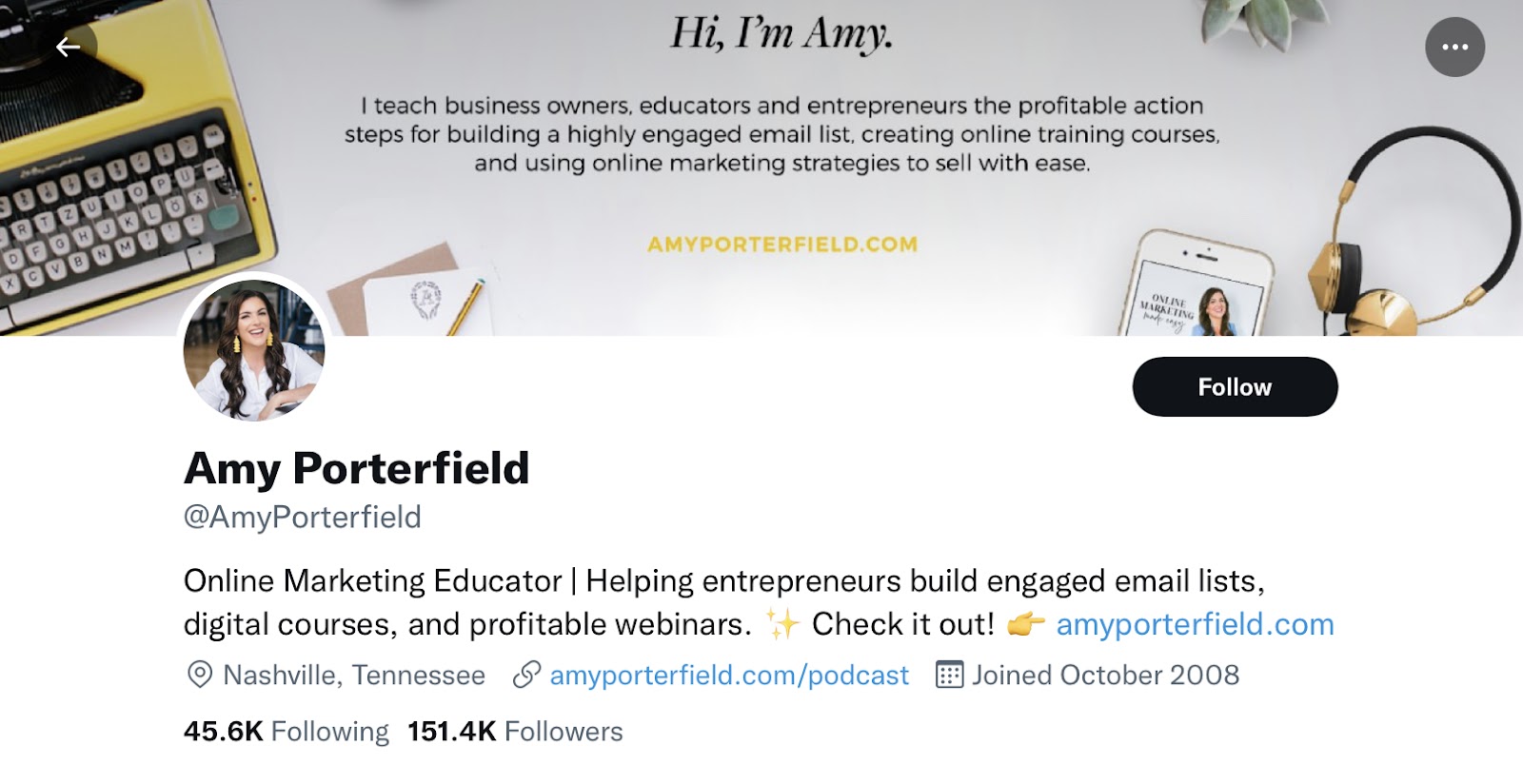
Gary Vaynerchuk (@GaryVee)
As one of the early innovators in eCommerce, Gary quickly made a name for himself on YouTube in the early 90s. As one of the most influential and well-known leaders in the social media marketing space, follow Gary for all things personal growth, establishing and growing a community online, and wellbeing in business.
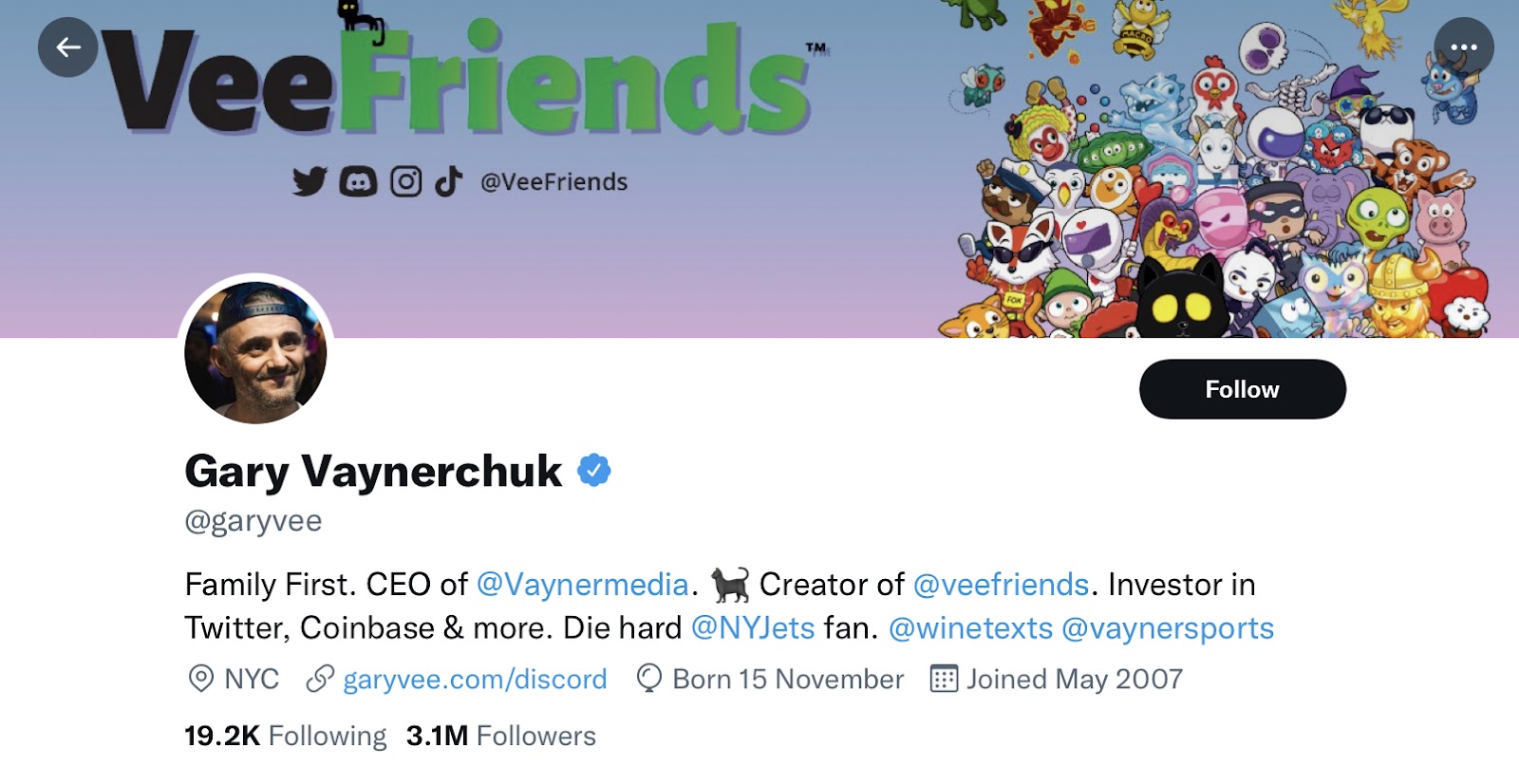
Kim Garst (@kimgarst)
Kim is a renowned keynote speaker, author, and social media strategist.
With over 500K followers on Twitter, follow Kim for daily motivation and advice on generating traffic and profits for your business through social media channels.

Read industry blogs and journals
Bite-sized tips on Twitter and Youtube are great for getting a news fix during your busy days, but for a more in-depth understanding of certain topics, nothing can beat the good old articles and guides you’ll find on popular social media news resources. Social Media Examiner, Mashable, and Social Media Today are just a few of our favorites to get started with.
Predict the engagement rate across different channels with social media benchmarks
Join community platforms
Often, the very first whisperings of trends that completely reshape companies’ approach to social media marketing crop up on community groups like subreddits, Discord servers, Slack groups, and more. There are countless spaces like this where you can keep your finger on the pulse and trade ideas with like-minded marketers and entrepreneurs - so get searching!
Keep an eye on the social media marketing ROI
With tens of social media channels and thousands of mentions per day, it's hard to get a 360-degree overview of your social performance.
A social media strategy based on guesstimates and vague data won't generate any results. All you need is a comprehensive dashboard to keep track of changes across platforms in real-time.
Marketing ETL systems, such as Improvado, gather paid and organic performance data from social platforms automatically to automate your marketing reporting.
Final Thoughts
We hope you’ve found this introduction to social media monitoring useful as you navigate the tumultuous landscape of online brand management and social media marketing.
Though drawing out useful patterns from all the noise can be a challenge, when you have the right tools, resources, and a little bit of experience, active social media monitoring can reap all kinds of rewards!
.png)
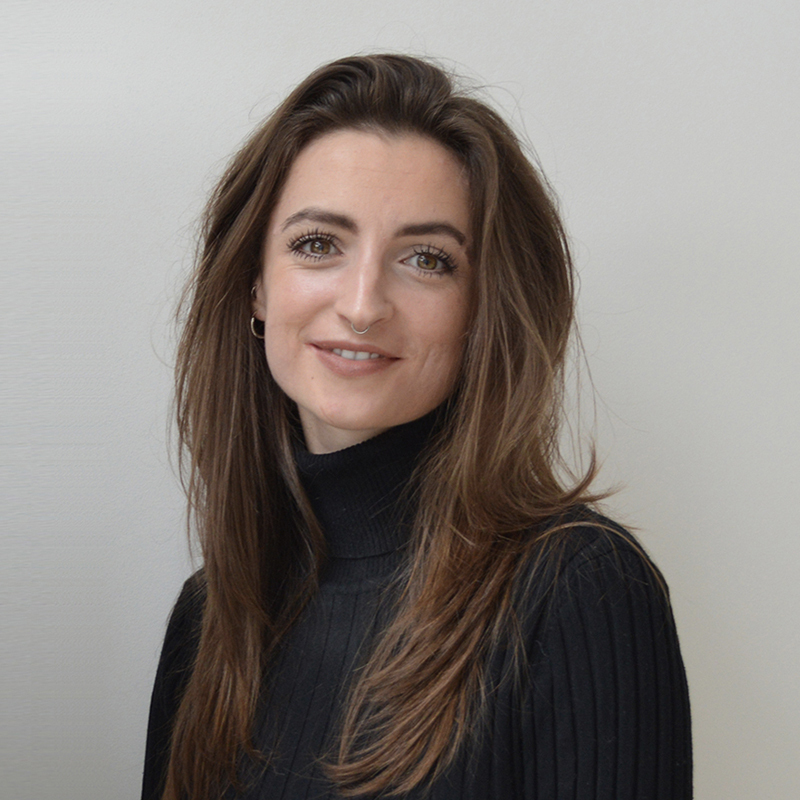


.png)
